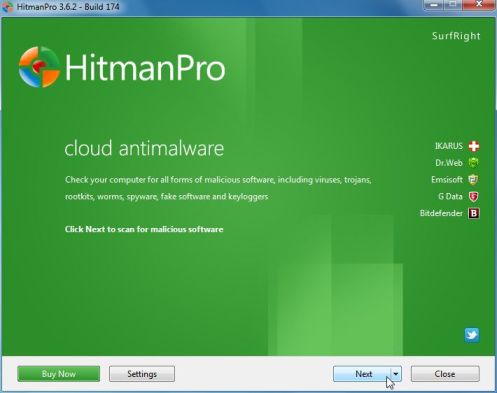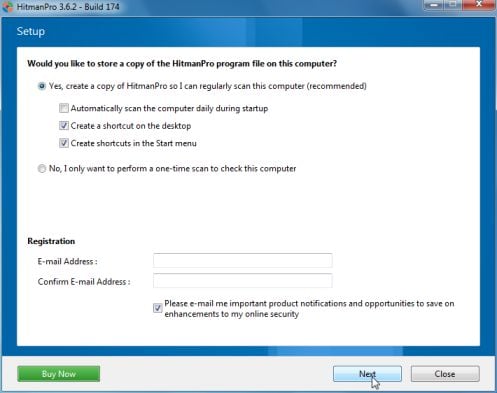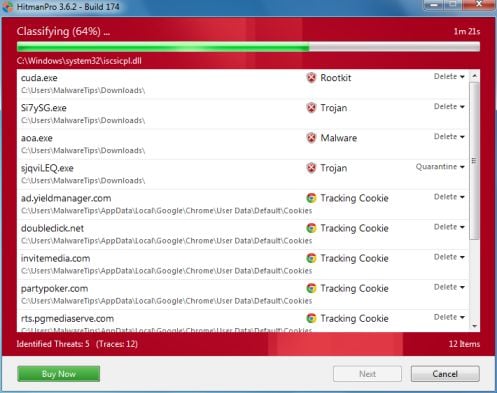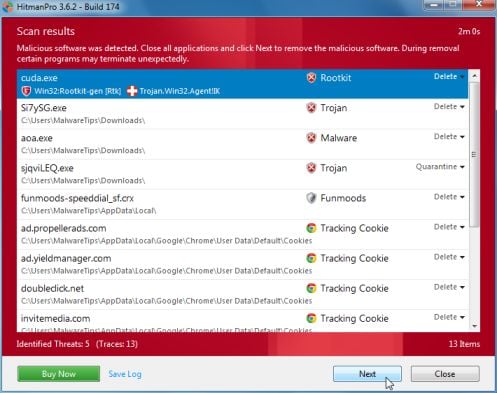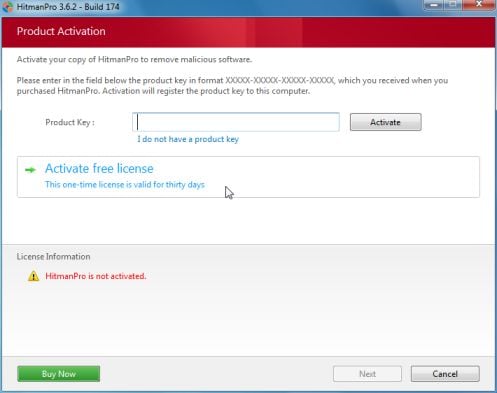If your computer is locked, and you are seeing a “WARNING! Your computer has been blocked and all your data were encrypted” notification from FBI Cybercrime Division and International Cyber Security Protection Alliance, then your computer is infected with a piece of malware known as Trojan Reveton.
![FBI Cybercrime Division: Computer blocked, data encrypted virus [Image: FBI Cybercrime Division: Computer blocked, data encrypted virus]](http://malwaretips.com/blogs/wp-content/uploads/2013/05/FBI-Cybercrime-Division-computer-blocked-data-encrypted.jpg)
The FBI “Your computer has been blocked and all your files were encrypted” virus is distributed through several means. Malicious websites, or legitimate websites that have been compromised, may drop this trojan onto a compromised computer. This drive-by-download often happens surreptitiously. Another method used to propagate this type of malware is spam email containing infected attachments or links to malicious websites. The threat may also be downloaded manually by tricking the user into thinking they are installing a useful piece of software.
The FBI “Your computer has been blocked and all your files were encrypted” virus is also prevalent on peer-to-peer file sharing websites and is often packaged with pirated or illegally acquired software.
Once installed on your computer, the “Your computer has been blocked and all your files were encrypted” virus will display a bogus notification that pretends to be from FBI Cybercrime Division and ICSPA, and states that your computer has been blocked due to it being involved with the distribution of pornographic material, SPAM and copyrighted content.
The “Your computer has been blocked and all your files were encrypted” virus will lock you out of your computer and applications, so whenever you’ll try to log on into your Windows operating system or Safe Mode with Networking, it will display instead a lock screen asking you to pay a non-existing fine of €200 or $200 in the form of a Ukash, MoneyPak or Paysafecard voucher depending on your location.
Furthermore, to make this alert seem more authentic, this virus also has the ability to access your installed webcam, so that the bogus “Your computer has been blocked and all your files were encrypted” notification shows what is happening in the room.
The FBI Cybercrime Division “Your computer has been blocked and all your files were encrypted” virus locks the computer and depending on the user’s current location, displays a localized webpage that covers the entire desktop of the infected computer and demands payment for the supposed possession of illicit material.
The message displayed by the threat can be localized depending on the user’s location, with text written in the appropriate language.
FBI Cybercrime Division
International Cyber Security Protection Alliance
WARNING! Your computer has been blocked and all your data were encrypted
Reason: violation of Law.
Possible violations are described below:
Title 17- COPYRIGHTS
Chapter 10, Subchapter B – COPYING CONTROLS
(a) Prohibition on Importation, Manufacture, and Distribution.— No person shall import, manufacture, or distribute any digital audio recording device or digital audio interface device that does not conform to—
(1) the Serial Copy Management System;
(2) a system that has the same functional characteristics as the Serial Copy Management System and requires that copyright and generation status information be accurately sent, received, and acted upon between devices using the system’s method of serial copying regulation and devices using the Serial Copy Management System; or
(3) any other system certified by the Secretary of Commerce as prohibiting unauthorised serial copying.
Title 18 – CRIMES AND CRIMINAL PROCEDURE Title 18, Part I Chapter 117 § 2427
Inclusion of offences relating to child pornography in definition of sexual activity for which any person can be charged with a criminal offence.
Title 18 Part I Chapter 110, § 2258C Inclusion of offences relating to child pornography in definition of sexual activity for which any person can be charged with a criminal offence.
a) Elements.—
(1) In general— The National Center for Missing and Exploited Children may provide elements relating to any apparent child pornography image of an identified child to an electronic communication service provider or a remote computing service provider for the sole and exclusive purpose of permitting that electronic communication service provider or remote computing service provider to stop the further transmission of images.
(2) Inclusions.— The elements authorised under paragraph (1) may include hash values or other unique identifiers associated with a specific image, Internet location of images, and other technological elements that can be used to identify and stop the transmission of child pornography.
(3) Exclusion— The elements authorised under paragraph (1) may not include the actual images.
(b) Use by Electronic Communication Service Providers and Remote Computing Service Providers.— Any electronic communication service provider or remote computing service provider that receives elements relating to any apparent child pornography image of an identified child from the National Center for Missing and Exploited Children under this section may use such information only for the purposes described in this section, provided that such use shall not relieve that electronic communication service provider or remote computing service provider from its reporting obligations under section 2258A.
(c) Limitations.— Nothing in subsections [1] (a) or (b) requires electronic communication service providers or remote computing service providers receiving elements relating to any apparent child pornography image of an identified child from the National Center for Missing and Exploited Children to use the elements to stop the further transmission of the images.
(d) Provision of Elements to Law Enforcement.— The National Center for Missing and Exploited Children shall make available to Federal. State, and local law enforcement involved in the investigation of child pornography crimes elements, including hash values, relating to any apparent child pornography image of an identified child reported to the National Center for Missing and Exploited Children.
(e) Use by Law Enforcement.— Any Federal, State, or local law enforcement agency that receives elements relating to any apparent child pornography image of an identified child from the National Center for Missing and Exploited Children under section [1] (d) may use such elements only in the performance of the official duties of that agency to investigate child pornography crimes.
Title 18 Part I Chapter 110 § 22524
§ 2252A – Certain activities relating to material constituting or containing child pornography
Title 26 Subtitle F Chapter 78 > Subchapter A § 7612 Special procedures for summonses for computer software
To unlock your computer you must pay a penalty within 24 hours and input voucher axle to a form below. It will take up to 24 hours to check voucher code and decrypt your data.
The “Your computer has been blocked and all your files were encrypted” lock screen is a scam, and you should ignore any alerts that this malicious software might generate.
Under no circumstance should you send any Ukash or Paysafecard code to these cyber criminals, and if you have, you can should request a refund, stating that you are the victim of a computer virus and scam.
“Your computer has been blocked and all your files were encrypted” lock screen – Virus Removal Guide
STEP 1: Remove “Your computer has been blocked and all your files were encrypted” lock screen from your computer
“Your computer has been blocked and all your files were encrypted” virus has modified your Windows registry and added its malicious files to run at start-up, so whenever you’re trying to boot your computer it will launch instead its bogus notification.To remove these malicious changes, we can use any of the below methods :
Method 1: Start your computer in Safe Mode with Networking and scan for malware
Some variants of “Your computer has been blocked and all your files were encrypted” Ukash virus will allow the users to start the infected computer in Safe Mode with Networking without displaying the bogus lock screen. In this first method, we will try to start the computer in Safe Mode with Networking and then scan for malware to remove the malicious files.
- Remove all floppy disks, CDs, and DVDs from your computer, and then restart your computer.
- Press and hold the F8 key as your computer restarts.Please keep in mind that you need to press the F8 key before the Windows start-up logo appears.
Note: With some computers, if you press and hold a key as the computer is booting you will get a stuck key message. If this occurs, instead of pressing and holding the “F8 key”, tap the “F8 key” continuously until you get the Advanced Boot Options screen. - On the Advanced Boot Options screen, use the arrow keys to highlight Safe Mode with Networking , and then press ENTER.
![Remove "computer blocked, data encrypted" virus (FBI Scam) 4 [Image: Safe Mode with Networking]](data:image/gif;base64,R0lGODlhAQABAAAAACH5BAEKAAEALAAAAAABAAEAAAICTAEAOw==)
- If your computer has started in Safe Mode with Networking, you’ll need to perform a system scan (as seen on STEP 2) with Malwarebytes Anti-Malware and HitmanPro to remove the malicious files from your machine.
IF the “Your computer has been blocked and all your files were encrypted” virus didn’t allow you to start the computer in Safe Mode with Networking,you’ll need to follow Method 2 to get rid of its lock screen.
Method 2: Restore Windows to a previous state using System Restore
System Restore can return your computer system files and programs to a time when everything was working fine, so we will try to use this Windows feature to get rid of “Your computer has been blocked and all your files were encrypted” lock screen.
- Restart your computer, and then press and hold F8 during the initial startup to start your computer in safe mode with a Command prompt.
Note: With some computers, if you press and hold a key as the computer is booting you will get a stuck key message. If this occurs, instead of pressing and holding the “F8 key”, tap the “F8 key” continuously until you get the Advanced Boot Options screen. - Use the arrow keys to select the Safe mode with a Command prompt option.

- At the command prompt, type cd restore, and then press ENTER.
Next,we will type rstrui.exe , and then press ENTER.Alternatively, if you are using Windows Vista, 7 and 8, you can just type : C:\windows\system32\rstrui.exe , and press ENTER.
If you are using Windows XP, you will need to type C:\windows\system32\restore\rstrui.exe, and then press ENTER.

- The System Restore utility will start, and you’ll need to select a restore point previous to this infection.

- After System Restore has completed its task, you should be able to boot in Windows normal mode, and perform a system scan (as seen on STEP 2) with Malwarebytes Anti-Malware and HitmanPro to remove the malicious files from your machine.
IF the “Your computer has been blocked and all your files were encrypted” virus didn’t allow you to restore your computer to a previous point, you’ll need to follow Method 3 to get rid of its screen lock.
Method 3: Remove “Your computer has been blocked and all your files were encrypted” lock screen with msconfig utility
When your computer was infected with the “Your computer has been blocked and all your files were encrypted” virus, this trojan has set a its malicious files to start whenever your computer is booting. IF you didn’t have a system restore point, we can use msconfig to remove the malicious startup entries.
- While your computer is in Safe Mode with Command Prompt, type msconfig to start the Windows System Configuration utility.
![Type msconfig in the Command prompt [Image: Type msconfig in the Command prompt]](data:image/gif;base64,R0lGODlhAQABAAAAACH5BAEKAAEALAAAAAABAAEAAAICTAEAOw==)
- Click on the Startup tab, then search for any suspicious or unknonw entries (random numbers or letters, ctfmon.exe, and other suspicious or unknown entries), and unckech them from startup, then click on OK.
This will stop the “Your computer has been blocked and all your files were encrypted” virus from starting with Windows, however it won’t remove the malicious files from your computer.
![Uncheck any suspicious entries from start-up [Image: Uncheck any suspicious entries from start-up]](data:image/gif;base64,R0lGODlhAQABAAAAACH5BAEKAAEALAAAAAABAAEAAAICTAEAOw==)
- Type shutdown /r in the command prompt to restart your computer, then perform a scan with Malwarebytes Anti-Malware and HitmanPro as seen on STEP 2.
IF the “Your computer has been blocked and all your files were encrypted” virus didn’t allow you to start the computer in Safe Mode with Command Prompt you’ll need to follow Method 4 to get rid of its screen lock.
Method 4: Remove “Your computer has been blocked and all your files were encrypted” virus with HitmanPro Kickstart
IF you couldn’t boot into Safe Mode with Command Prompt or didn’t have a System Restore point on your machine, we can use HitmanPro Kickstart to bypass this infection, and access your computer to scan it for malware.
- We will need to create a HitmanPro Kickstart USB flash drive,so while you are using a “clean” (non-infected) computer, download HitmanPro from the below link.
HITMANPRO DOWNLOAD LINK (This link will open a download page in a new window from where you can download HitmanPro) - Insert your USB flash drive into your computer and follow the instructions from the below video:
- After you have create the HitmanPro Kickstart USB flash drive, you can insert this USB drive into the infected machine and start your computer.
- Once the computer starts, repeatedly tap the F11 key (on some machines its F10 or F2),which should bring up the Boot Menu, from there you can select to boot from your USB.
Next,you’ll need to perform a system scan with HitmanPro as see in the below video:
- After HitmanPro Kickstart has completed its task,you should be able to boot in Windows normal mode,from there you’ll need to perform a system scan (as seen on STEP 2) with Malwarebytes Anti-Malware and HitmanPro to remove the malicious files from your machine.
STEP 2: Remove “Your computer has been blocked and all your files were encrypted” malicious files from your computer
Run a computer scan with Malwarebytes Anti-Malware Free
- You can download Malwarebytes Anti-Malware Free from the below link,then double click on it to install this program.
MALWAREBYTES ANTI-MALWARE DOWNLOAD LINK(This link will open a download page in a new window from where you can download Malwarebytes Anti-Malware Free) - When the installation begins, keep following the prompts in order to continue with the setup process.
DO NOT make any changes to default settings and when the program has finished installing, make sure you leave both the Update Malwarebytes’ Anti-Malware and Launch Malwarebytes’ Anti-Malware checked,then click on the Finish button.
![Malwarebytes Anti-Malware final installation screen [Image: Malwarebytes Anti-Malware final installation screen]](data:image/gif;base64,R0lGODlhAQABAAAAACH5BAEKAAEALAAAAAABAAEAAAICTAEAOw==)
- On the Scanner tab,select Perform quick scan and then click on the Scan button to start scanning your computer.
![Run a Quick Scan with Malwarebytes Anti-Malware [Image: Malwarebytes Anti-Malware Quick Scan]](data:image/gif;base64,R0lGODlhAQABAAAAACH5BAEKAAEALAAAAAABAAEAAAICTAEAOw==)
- Malwarebytes’ Anti-Malware will now start scanning your computer for “Your computer has been blocked and all your files were encrypted” virus as shown below.

- When the Malwarebytes scan will be completed,click on Show Result.
![Malwarebytes when the system scan has completed [Image: Malwarebytes Anti-Malware scan results]](data:image/gif;base64,R0lGODlhAQABAAAAACH5BAEKAAEALAAAAAABAAEAAAICTAEAOw==)
- You will now be presented with a screen showing you the malware infections that Malwarebytes’ Anti-Malware has detected.Please note that the infections found may be different than what is shown in the image.Make sure that everything is Checked (ticked) and click on the Remove Selected button.
![Click on Remove Selected to get rid of [Image:Malwarebytes removing virus]](data:image/gif;base64,R0lGODlhAQABAAAAACH5BAEKAAEALAAAAAABAAEAAAICTAEAOw==)
- After your computer will restart in Normal mode, open Malwarebytes Anti-Malware and perform a Full System scan to verify that there are no remaining threats
Run a computer scan with HitmanPro
- Download HitmanPro from the below link,then double click on it to start this program.
HITMANPRO DOWNLOAD LINK (This link will open a new web page from where you can download HitmanPro)
IF you are experiencing problems while trying to start HitmanPro, you can use the Force Breach mode.To start HitmanPro in Force Breach mode, hold down the left CTRL-key when you start HitmanPro and all non-essential processes are terminated, including the malware process. (How to start HitmanPro in Force Breach mode – Video) - HitmanPro will start and you’ll need to follow the prompts (by clicking on the Next button) to start a system scan with this program.


- HitmanPro will start scanning your computer for “Your computer has been blocked and all your files were encrypted” malicious files as seen in the image below.

- Once the scan is complete,you’ll see a screen which will display all the infected files that this utility has detected, and you’ll need to click on Next to remove these malicious files.

- Click Activate free license to start the free 30 days trial and remove all the malicious files from your computer.


![Remove "computer blocked, data encrypted" virus (FBI Scam) 1 [Image: FBI: Your computer has been blocked and all your files were encrypted virus]](https://malwaretips.com/blogs/wp-content/uploads/2013/05/fbi-computer-blocked-data-encrypted-virus-290x290.jpg)
![Remove "computer blocked, data encrypted" virus (FBI Scam) 2 [Image: Your computer has been blocked and all your files were encrypted virus]](https://malwaretips.com/blogs/wp-content/uploads/2013/05/Your-computer-has-been-blocked-and-all-your-files-were-encrypted-virus-290x290.jpg)
![Remove "computer blocked, data encrypted" virus (FBI Scam) 3 [Image: ICSPA: Your computer has been blocked and all your files were encrypted virus]](https://malwaretips.com/blogs/wp-content/uploads/2013/05/icspa-computer-blocked-data-encrypted-virus-290x290.jpg)
![Remove "computer blocked, data encrypted" virus (FBI Scam) 4 [Image: Safe Mode with Networking]](http://malwaretips.com/blogs/wp-content/uploads/2013/01/safemode.jpg)
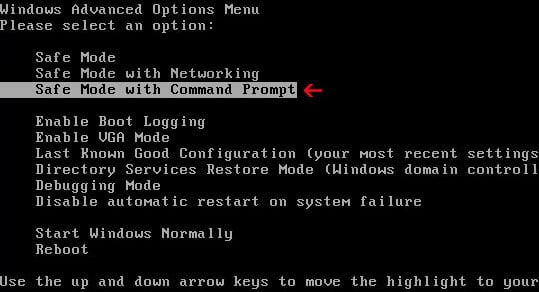


![Type msconfig in the Command prompt [Image: Type msconfig in the Command prompt]](http://malwaretips.com/blogs/wp-content/uploads/2013/02/command-prompt-start-msconfig.jpg)
![Uncheck any suspicious entries from start-up [Image: Uncheck any suspicious entries from start-up]](http://malwaretips.com/blogs/wp-content/uploads/2013/02/msconfig-remove-startup-item.jpg)
![Malwarebytes Anti-Malware final installation screen [Image: Malwarebytes Anti-Malware final installation screen]](http://malwaretips.com/blogs/wp-content/uploads/2013/01/malwarebytes-installation.jpg)
![Run a Quick Scan with Malwarebytes Anti-Malware [Image: Malwarebytes Anti-Malware Quick Scan]](http://malwaretips.com/blogs/wp-content/uploads/2013/01/malwarebytes-quick-scan.jpg)
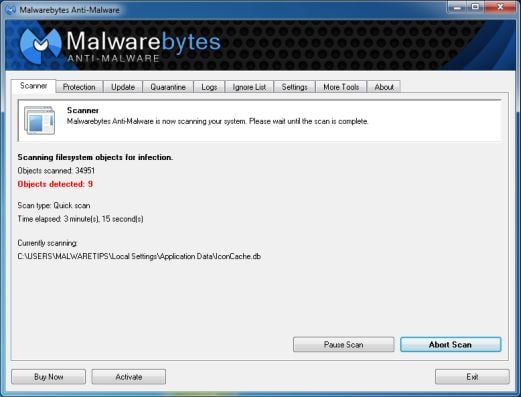
![Malwarebytes when the system scan has completed [Image: Malwarebytes Anti-Malware scan results]](http://malwaretips.com/blogs/wp-content/uploads/2013/01/malwarebytes-scan-results.jpg)
![Click on Remove Selected to get rid of [Image:Malwarebytes removing virus]](http://malwaretips.com/blogs/wp-content/uploads/2013/01/malwarebytes-virus-removal.jpg)
